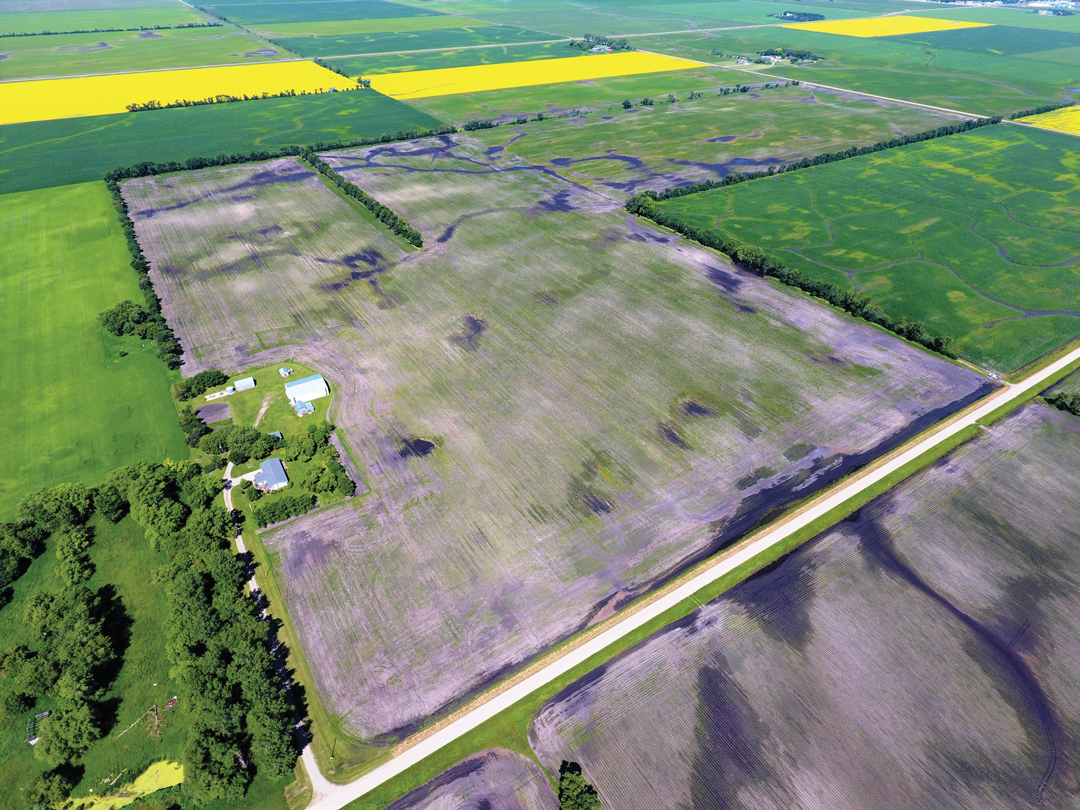DITCH DEFENDERS
BY CRAIG LESTER • PHOTO COURTESY OF PERRY MCCORMICK
It has become commonplace to see farm equipment at work between power poles and in ditches where fences have been removed so the 66-foot public right-of-way can be cropped. Dubbed “trespass farming,” Alberta counties have the authority to hand out fines where this illegal practice occurs. Among its range of detrimental effects is negative impacts on game birds.
This pushing of the envelope is particularly common in southern Alberta, said Kim Morton, provincial wildlife policy manager for Alberta Environment and Parks. “If the grass is left alone and grows tall, it can provide nesting cover for some edge species such as the grey partridge and pheasant.” These edge lands are seen as biodiversity reservoirs, as they provide habitat for a range of additional birds, mammals, reptiles and amphibians. These include such species as the at-risk ferruginous hawk and endangered loggerhead shrike
In partnership with groups such as Ducks Unlimited Canada (DUC) and the Alberta Conservation Association and the Government of Alberta, Pheasants Forever Canada has worked on bird conservation projects in Alberta since 1992. The group’s primary conservation focus is upland game birds such as Hungarian partridge and ring-necked pheasant, which commonly live in these ditches, said Perry McCormick, president and managing director.
With an Alberta Recovery Plan grant of $256,200 from Environment and Parks, the organization’s Calgary chapter will carry out work to dissuade farmers from trespass farming in public ditches and right-of-ways. The two-year project will attempt to raise awareness of the issue and the benefits of ditch conservation. “To take care of these places, we had to come from an educational awareness approach that was positive,” said McCormick. “We have no intentions of pointing at losses. We are simply trying to keep what’s there and to persuade landowners and municipalities to refrain from the continued erosion of ditch habitat.”
The ecological upside of uncultivated ditches goes far beyond the preservation of bird and other animal populations. Natural vegetation in these areas creates habitat for pollinators such as bees and butterflies and other beneficial insects and also acts to mitigate flooding, which can damage roads and culverts.
The importance of protecting ditches is amplified by the fact a large percentage of Prairie wetlands has disappeared. DUC estimates about 80 acres of natural wetlands are lost every day in Canada. With this loss, the central line of defence for the nutrient filtration of runoff is now roadside ditches, said McCormick. Natural vegetation on these strips of land helps to ensure inputs applied to fields do not end up in rivers and lakes. “Therefore, we’re focusing quite a bit on the ecological services that ditches provide,” he said.
Carbon sequestration has become a major focus in the agriculture industry. Though the numbers have not yet been crunched, McCormick said there is anecdotal evidence a noteworthy amount is taking place in healthy ditches. He said Pheasants Forever intends to commission studies in the future to better calculate the just how much sequestration occurs. “The same thing that we’ve done for wetlands—measure all those attributes, those natural benefits—we would like to get done for ditches and right of ways.”
Cultivating farm-adjacent ditches may seem to be a harmless practice on first glance, but it has multiple negative impacts. The Pheasants Forever awareness campaign will get underway with a spring media campaign that will begin March 1. For more information on the initiative visit pfcalgary.ca.







Comments